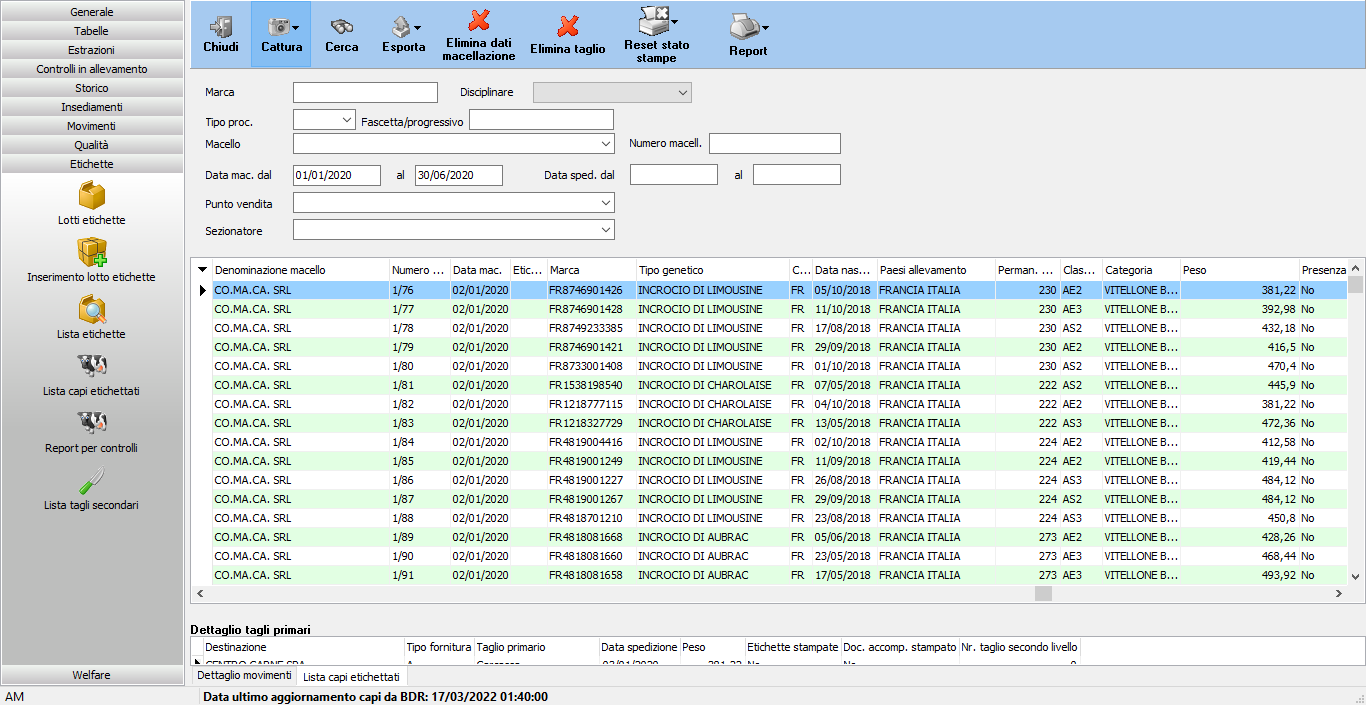Introduction to the challenge addressed The possibility for the farmer to access data deriving from the slaughter of the animals sent to the abattoir can be a very useful information about the management of the fattening phase. Farmers usually are paid on basis of the characteristics of the animal before exiting the gate of their farm and don’t know the informations after the abattoir gate, such as weight, carcass conformation (Seurop, fat grading system) for each animal. |
|
Description of Innovation For farmers belonging to a quality label all data are registered in Unicarve central data base. These data include type of animals (genetic type), data of arrival at the farm and delivery to the abattoir. When farms are visited by operators in charge of the control on the respect of requirements many data are recorded from the fattening period, among others the type of hosting structures, the diet composition… When animals are slaughtered all the carcasses’ informations are inserted by the abbatoirs operators in a local data base connected with Unicarve central data base. Data such as age, duration of fattening, genetic type, weight, SEUROP evaluation and carcass fat score of each animal of each farm are recorded in the central data base. Afterwards all data can be used for many analyses, in which taking into account the data of each animal during the fattening phase and the result obtained of that animal at slaughter This system, which was originally planned to give the possibility to transfer as many information as possible to the consumer, can be very useful for the farmer to have feedback on his choices during the fattening of his animals. The farms that belong to this system are around 100, farmers can access the data contacting Unicarve office personnel. The evolution of the practice would be to give farmers the possibility to access the database and control their data, and maybe also data of their own farm compared to other farmers. |
|
Impact on farm performance This practice can be important in many ways. Knowing the data of quality of the carcass of an animal after slaughter can drive the farmer about best animals to buy, best period of slaughter, best feeding plan in general or according to type of animal and gender. It can be useful to better optimize production factors also in the direction of animal welfare, for example finding the feeding plan which best fit the physiology of animals. Finally the optimization of factors obtained from the direct feedback from the abattoir leads to a better use of sources, which goes also in the direction of sustainability. |
|
The data inserted by the operator at slaughter as recorded in Unicarve’s central database |
